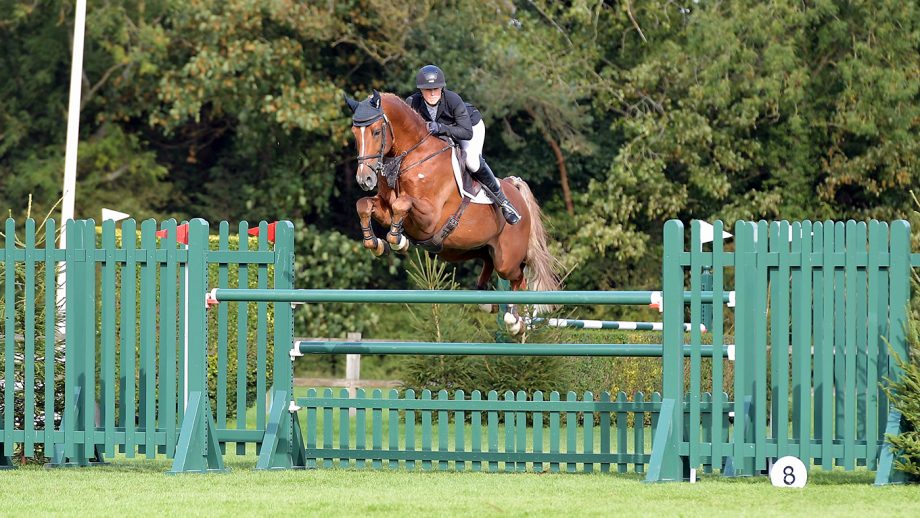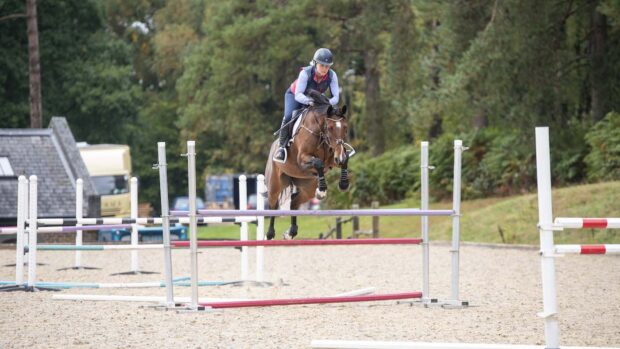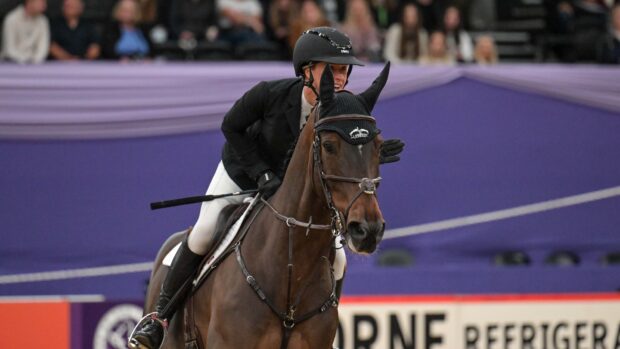International showjumper Holly Smith (pictured) uses this showjumping gridwork exercise with both her younger and more experienced horses to help them jump a flowing round.
Holly explains her “showjumping gym” gridwork exercise…
The three main things I consider when riding a showjumping course are time, attention and care. This exercise enables you to practise pushing horses on between lines and bringing them back, getting them to focus. Mistakes are made when horses run on and you no longer have their full concentration, so this helps prevent that.
I call it a “gym layout”, which combines a variety of trotting poles, cavaletti, cross-pole oxers and narrow fillers with guide poles arranged into grids.
It’s a workout I find especially useful with my top horses when I feel they need to leave the floor, but I don’t want to jump them over big fences and put unnecessary strain on their tendons and ligaments.
It’s also something I introduce early on with the youngsters — I make it really easy and just start with poles on the ground. It’s a big help with the canter, particularly as some horses don’t initially have the confidence to canter over fences.
The showjumping gridwork exercise

It is based around grids, incorporating placing poles, cavaletti and fences on both bounces and longer distances. You can mix and match to suit each horse and I usually introduce a new challenge to a line at least once during the session.
1. To start, set up three or four lines of different fence combinations, one of which might just be trotting poles raised at alternate ends.
2. I start out gently to make sure the horse is understanding the question. Cavaletti and poles should be falling in the centre of the arc of the horse’s stride or jump. Once the horse is jumping each line correctly, I start to come up with some “gym circuits”.
3. Some of the trickier elements — such as a skinny filler with guide poles — I might introduce individually, and then add into a grid later on. I like to “skinny train” my showjumpers, as course builders can throw in some surprises.
4. I usually put a cross-pole oxer at the end of a line or in the middle of a grid, as this help with straightness. V-poles, guide rails and poles as “tunnels” on the floor all help to stop any drifting.
5. I will introduce a bigger fence into a line — at a max of 1.10m — to help keep their concentration.
6. Between lines you can also introduce some exercises on the flat. I like to do a canter to walk transition and then ask the horses to move their hindquarters around 180°, while keeping their shoulders still (turn on the forehand), before going back into canter. It teaches them balance and gets them stepping under. As you move out of the exercise, it emphasises turning from the outside rein.
Continued below…
Like this? You might also enjoy reading these:
This simple exercise provides a solid foundation for skinnies and arrowheads to help you when jumping a horse on an

What is medium trot, and what are the benefits for your horse?

#SundaySchool: Jumping a horse on an angle with Francis Whittington

Subscribe to Horse & Hound magazine today – and enjoy unlimited website access all year round
Tips and pitfalls
- Make sure to give plenty of rests as injuries are most likely to occur when a horse is tired.
- There will often be lots of long lines and tight turns in an arena set-up, so it’s important to keep control of the horse’s outside shoulder.
- If a horse isn’t paying attention, introduce V-poles on the sides of the fences to help.
Horse & Hound magazine, out every Thursday, is packed with all the latest news and reports, as well as interviews, specials, nostalgia, vet and training advice. Find how you can enjoy the magazine delivered to your door every week, plus options to upgrade to access our H&H Plus online service which brings you breaking news as it happens as well as other benefits.




